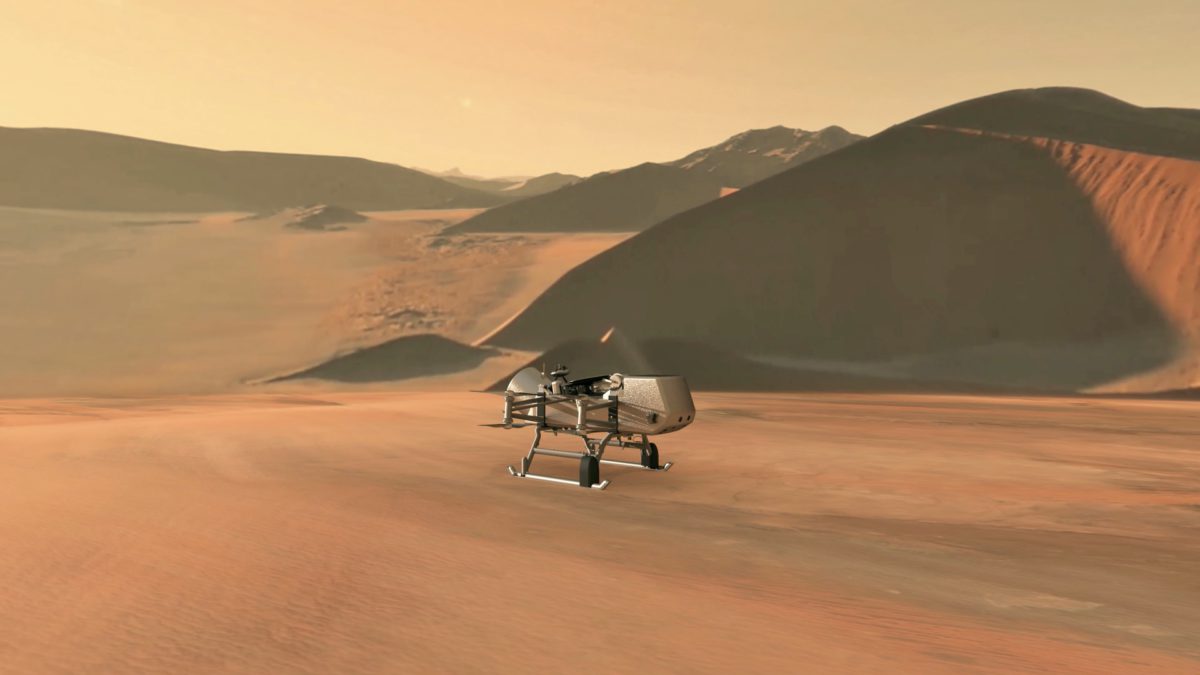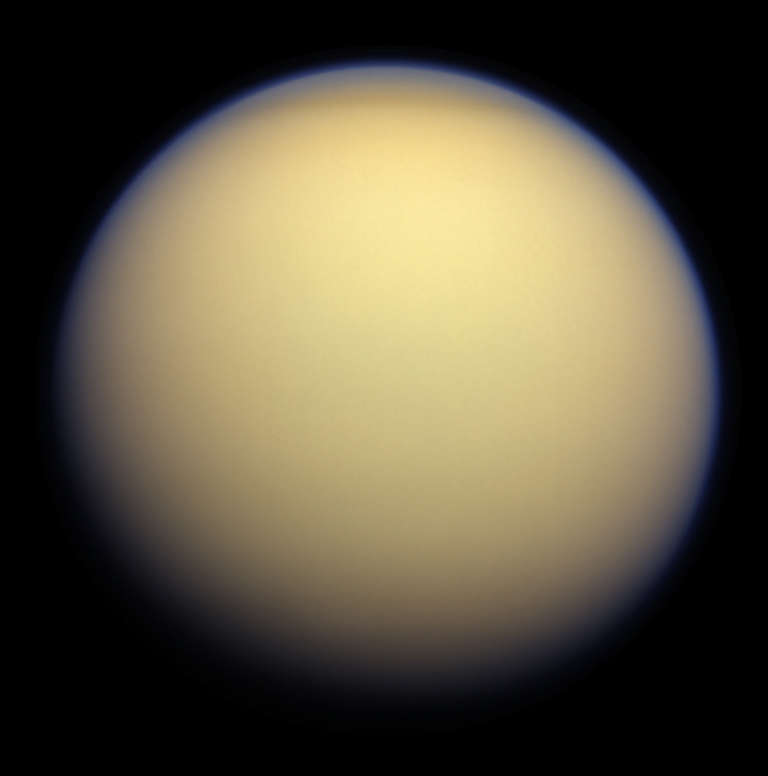Jason Davis • Jun 27, 2019
NASA Greenlights Dragonfly, a Quadcopter Mission to Titan
NASA's newest planetary science mission is a quadcopter that will fly around the surface of Saturn’s moon Titan, the agency announced today. Sporting 8 rotors and a nuclear power source like the Mars Curiosity rover, Dragonfly will launch in 2026 and arrive at Titan in 2034. The mission will build on key discoveries made by Cassini, which saw its 13-year mission at Saturn end in 2017.

Dragonfly becomes NASA's fourth New Frontiers mission, the program responsible for sending New Horizons to Pluto and 2014 MU69, Juno to Jupiter, and OSIRIS-REx to Bennu. New Frontiers missions are cost-capped at around $1 billion.
"All of us in The Planetary Society are excited about NASA's selection of Dragonfly as the next mission in the agency's New Frontiers Program," said Jim Bell, president of The Planetary Society board of directors and a planetary scientist at Arizona State University. "Titan is one of the most interesting and enigmatic worlds in the solar system, and its surface, atmosphere, and interior could tell us much about the origin and evolution of potentially habitable planets—including the early Earth. The data from the first drone to explore the outer solar system should lead to many new scientific discoveries, and the photos of Titan's exotic landscape promise to be spectacular!"
Dragonfly will cover more than 175 kilometers during its 2.7-year mission, initially landing at Titan’s vast Shangri-La dune fields, the same region where ESA’s Huygens probe landed in 2005. The 3-meter-long probe will touch down almost precisely one Saturn year after Huygens’ historic descent, meaning that Huygens’ experience provides a direct test of the environment through which Dragonfly will enter.
The spacecraft will visit new locations using increasingly longer flights, building up to 8-kilometer trips during which it will scan the surface with science instruments and collect samples for analysis. Its lifetime is theoretically limited only by the decay of its plutonium power supply; it could last 8 Earth years.
The selection of Dragonfly means that CAESAR, the other New Frontiers mission finalist which would have returned a sample from comet 67P/Churyumov–Gerasimenko, was not been picked at this time. New Frontiers missions are proposed by scientists at research and academic institutions outside of NASA, and must adhere to a specific list of destinations derived in part by the planetary science community's 10-year Decadal Survey. Those destinations originally did not include Titan, but they did include comet sample return.
"NASA management added Titan as a potential mission destination just a few years ago, partly in response to scientific discoveries made by the Cassini mission and the Hubble Space Telescope after the release of the Decadal survey,” said Casey Dreier, chief advocate and senior space policy adviser at The Planetary Society. "Today’s selection suggests that NASA is embracing a faster process for reacting to new data and embracing riskier mission concepts."
A Comet or Titan: The Next New Frontiers Mission
Both would do compelling science in the mid-2030s. Otherwise the two missions could not be more different.
Larger than Mercury and covered with thick orange smog, Titan has an organic-rich atmosphere that has been producing complex carbon-rich compounds for 4 billion years. The moon’s atmosphere is almost entirely nitrogen, with methane acting like water does in Earth’s atmosphere, forming clouds, raining, and running off into rivers and seas. High above the ground, solar radiation converts the methane and nitrogen into complex organic gunk that slowly settles onto the surface. A similar combination of energy, organics and water may have originally sparked life on Earth. Dragonfly proposes to sample the materials that form Titan’s icy bedrock and gunky snow to determine what compounds they contain.

Dragonfly’s website says the spacecraft will use mass and gamma-ray spectrometers to measure the chemical composition of Titan’s surface. It will also be equipped with cameras, meteorology sensors, and instruments to perform seismic studies. Elizabeth "Zibi" Turtle, a planetary scientist at Johns Hopkins University’s Applied Physics Laboratory, will serve as the mission’s principal investigator.
Let’s Go Beyond The Horizon
Every success in space exploration is the result of the community of space enthusiasts, like you, who believe it is important. You can help usher in the next great era of space exploration with your gift today.
Donate Today

 Explore Worlds
Explore Worlds Find Life
Find Life Defend Earth
Defend Earth


